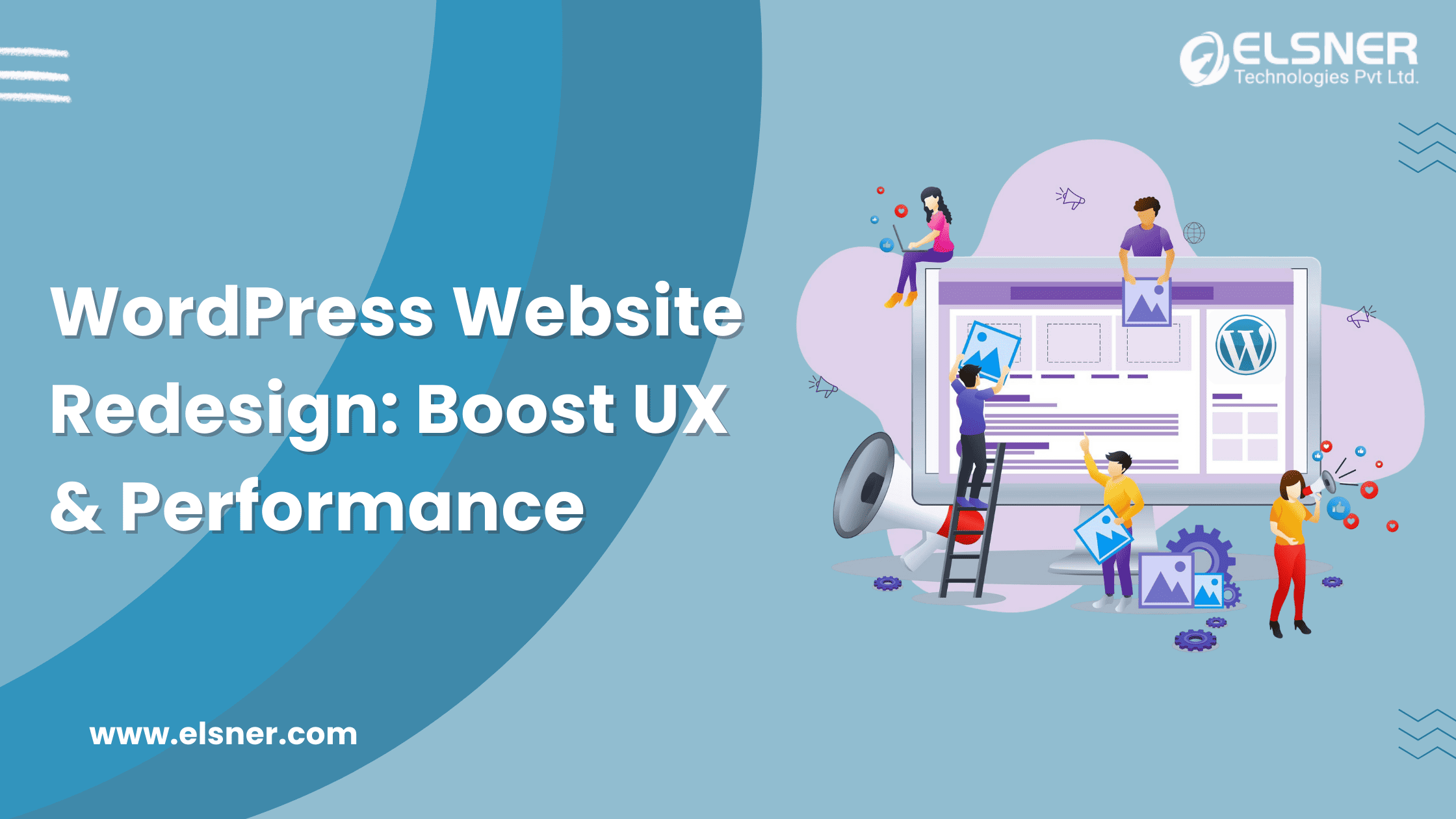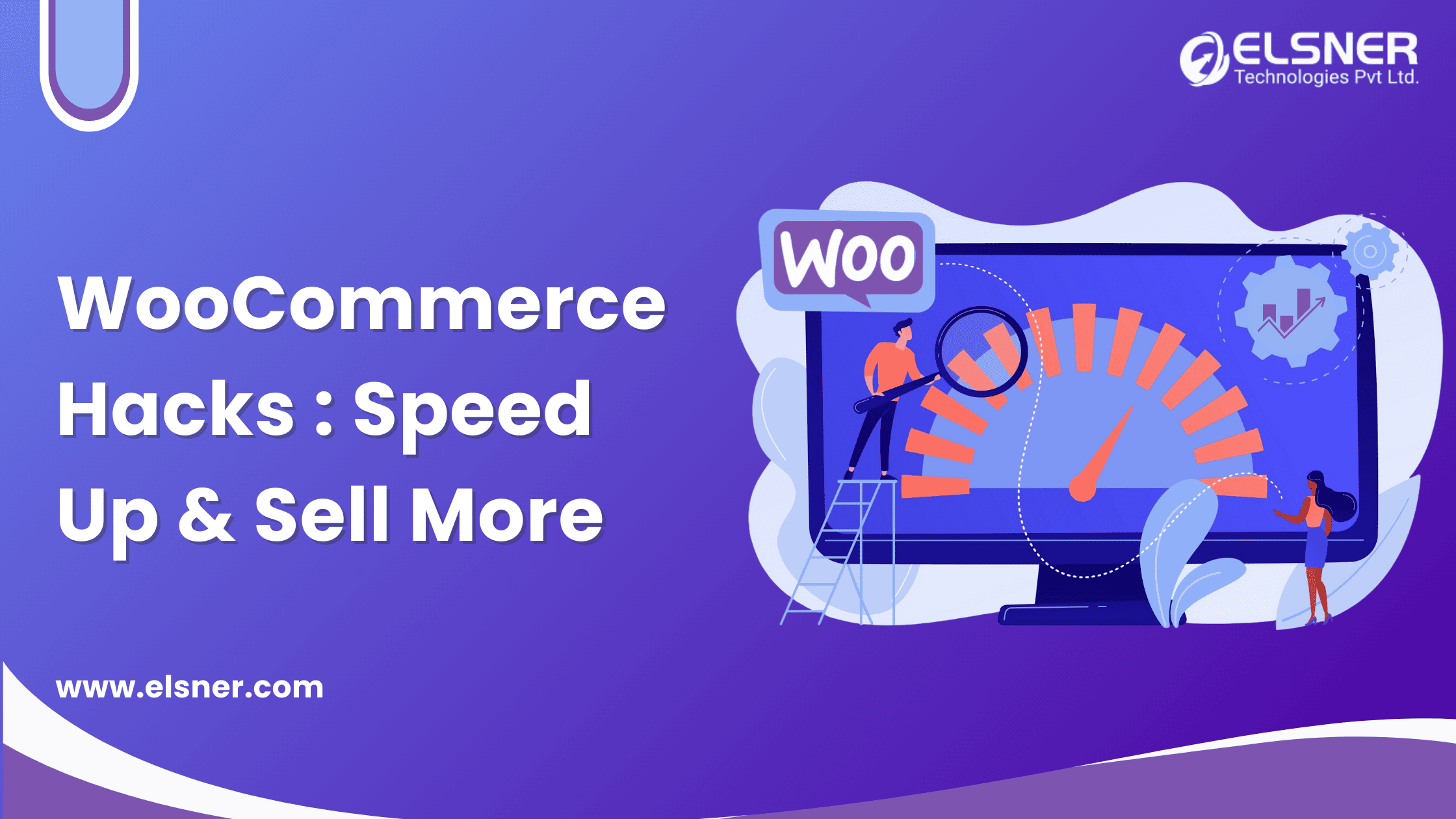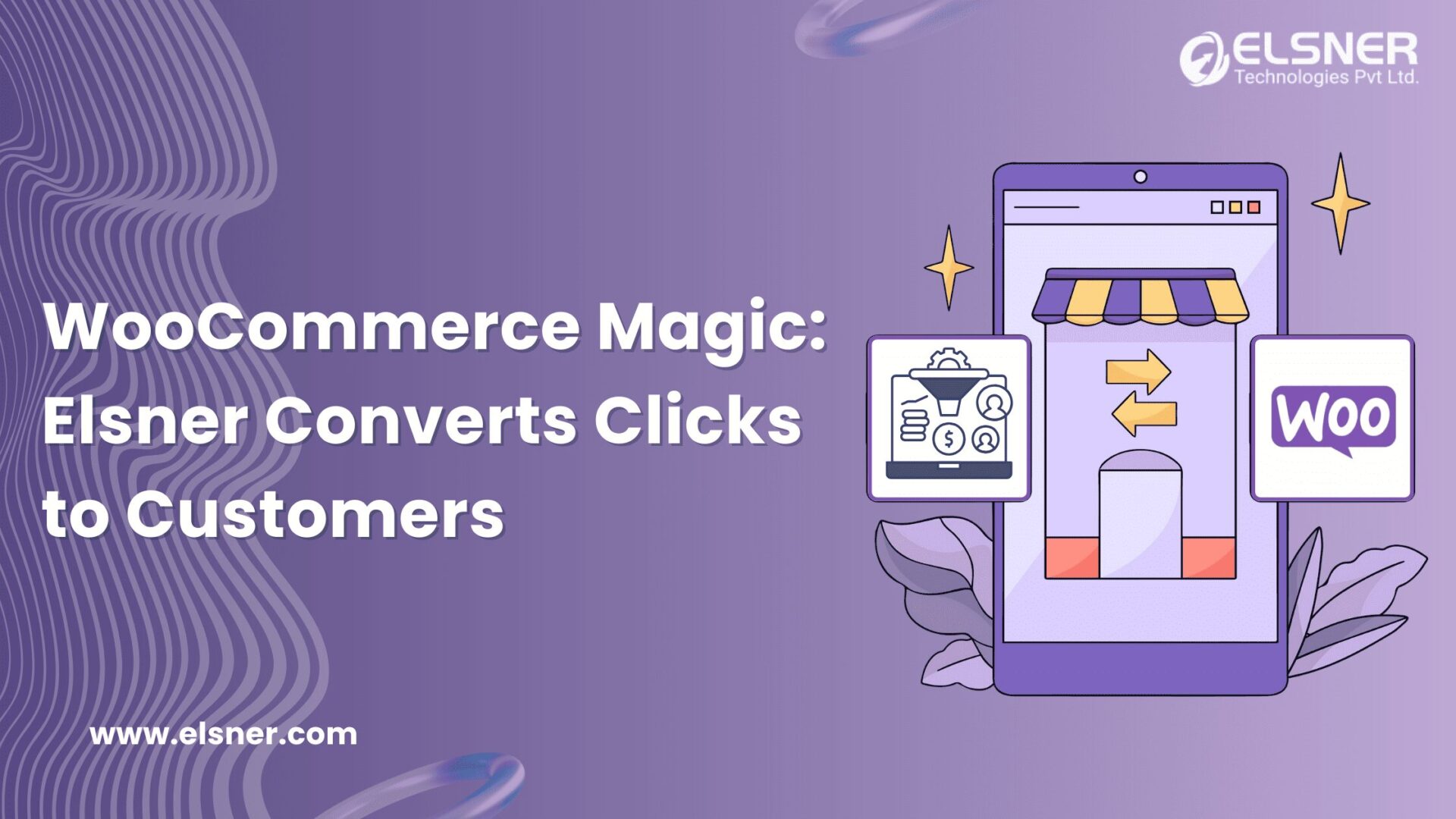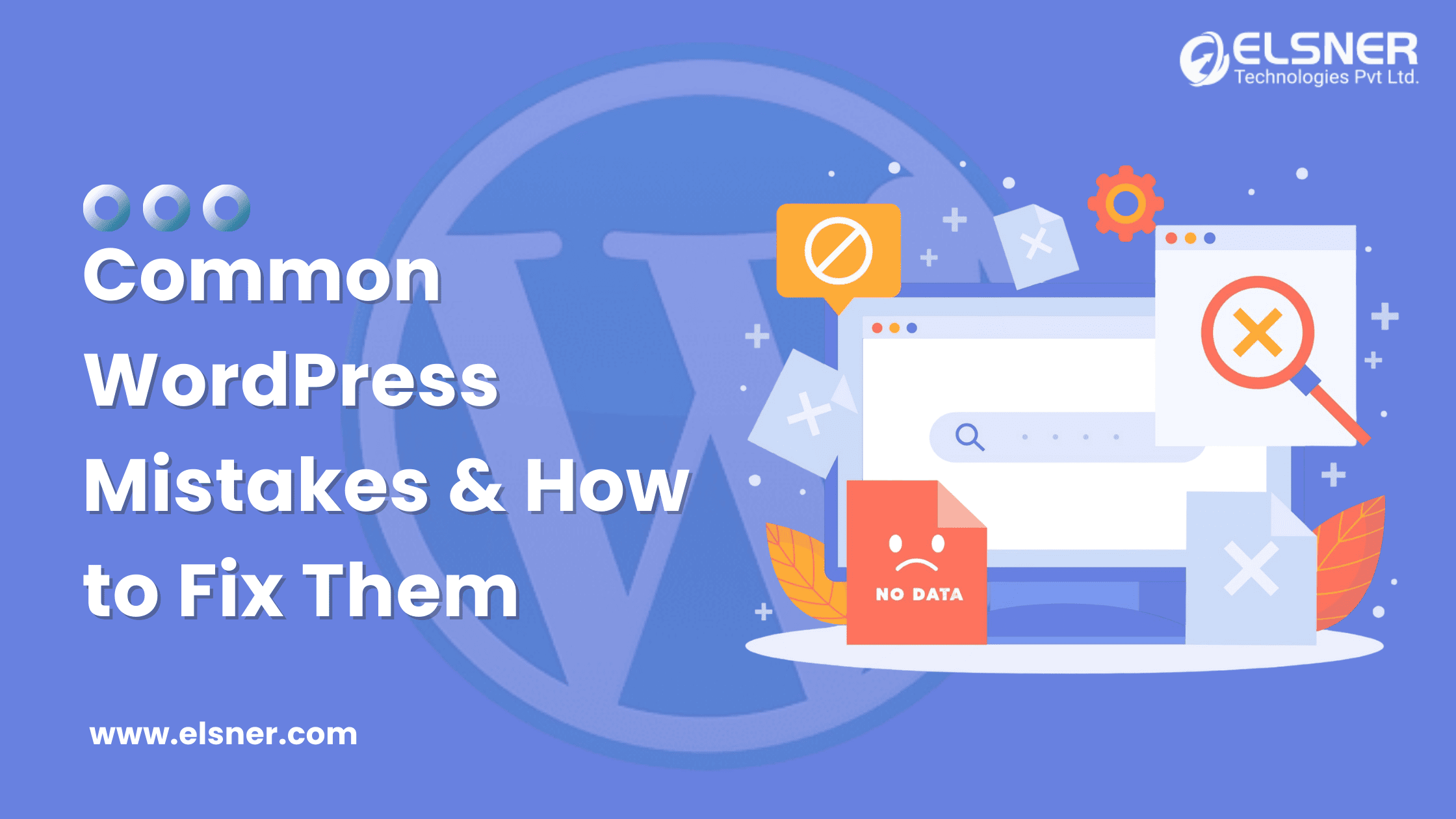- Why Redesign Your WordPress Website?
- Outdated Design: The “90s Called…”
- Poor User Experience (UX): Visitors Should Not Need a Map
- SEO Issues: Google is Watching (and Judging)
- Lack of Functionality: Features Matter!
- Technical Issues: The Digital Equivalent of a Leaky Roof
- Mobile Incompatibility: Over 50% of Web Traffic is Mobile
- Branding Update: Your Website Should Reflect Your Growth
- Competition: Keep Up or Get Left Behind
- Low Conversion Rates: Turning Visitors into Customers
- Migration: Transitioning Without Losing Data
- Need Expert WordPress Development Services?
- 4 Steps Before the Redesigning WordPress Website (Planning & Strategy)
- Step 1: Set Clear Goals
- Step 2: Structure Your Redesign Project
- Step 3: Assess Available Resources
- Step 4: Create a Redirection Plan
- 3 Steps to Launch Your Redesign WordPress Website (Implementation)
- Step 1: Choose Your Development Environment
- Step 2: Acquire the Tools You Need
- Step 3: Prepare Your New Website Content
- Is Your WordPress Website Running Smoothly?
- Steps to a Successful Launch WordPress Website
- Step 1: Choose a Direct Production or Pre-Production Server
- Step 2: Test Your New Website
- Step 3: Reactivate and Reconnect All Third-Party Services
- Website Redesign Best Practices
- 1. Prioritize User Experience (UX)
- 2. SEO Optimization from Day One
- 3. Choose the Right Theme & Plugins
- 4. Test Before You Go Live
- 5. Plan for Post-Launch Maintenance
- Wrapping Up
Imagine showing up to a party in a 90s tracksuit while everyone else is dressed in sleek, modern attire. That is exactly how an outdated website feels in today’s digital world. A WordPress website redesign is not just a facelift; it is about WordPress performance optimization, better user experience, and keeping up with the latest web trends.
Your visitors are impatient—53% of them will abandon a site if it takes longer than 3 seconds to load! If your site still looks like it was built when dial-up internet was a thing, it is time for a WordPress design revamp. But fear not! Whether you are looking for WordPress redesign services or planning a WordPress theme redesign, Elsner has got you covered. This guide will help you understand why and how to redesign your WordPress site like a pro.
Why Redesign Your WordPress Website?
Think of your website like a car. If it is outdated, slow, and breaking down every time you accelerate, it is time for a WordPress website redesign. A custom WordPress development company can help you revamp your site with modern design, improved performance, and enhanced functionality. Here is why you should not wait until your site is on life support to consider a WordPress design revamp.
-
Outdated Design: The “90s Called…”
If your website still looks like a MySpace page, visitors will assume your business is stuck in the past. Trends evolve, and so should your site. A WordPress theme redesign ensures a modern, sleek look that aligns with today’s web standards.
|
Statistic |
Why Does It Matters? |
|
75% of consumers judge a company’s credibility based on its website design. |
Outdated design = lost trust. |
|
Websites with modern UI/UX increase conversion rates by 200%. |
Design directly impacts sales. |
-
Poor User Experience (UX): Visitors Should Not Need a Map
A confusing site structure makes visitors feel like they are stuck in a maze. If users cannot navigate easily, they will leave faster than you can say “bounce rate.” A WordPress website redesign ensures smooth navigation, improved readability, and an overall enjoyable browsing experience.
-
SEO Issues: Google is Watching (and Judging)
Search engines love fresh, optimized content. An outdated site with broken links, slow speed, and poor mobile experience is an SEO disaster. A redesign WordPress site can significantly boost rankings by improving site speed, structure, and content optimization.
|
SEO Issue |
Impact |
|
Slow Loading Speed |
40% of visitors abandon sites that take more than 3 seconds to load. |
|
Poor Mobile Experience |
Google prioritizes mobile-friendly sites. |
|
Broken Links & Errors |
Bad for SEO and user experience. |
-
Lack of Functionality: Features Matter!
A decade ago, having a simple website was fine. Today, users expect interactive features like live chat, AI-driven search, and personalized content. If your site lacks these, a WordPress design revamp is long overdue. Adding modern functionality enhances user engagement and conversion rates.
-
Technical Issues: The Digital Equivalent of a Leaky Roof
Does your website crash at random times? Do images load like it is 1999? If so, it is time for a WordPress performance optimization. A well-coded website is essential for security, speed, and reliability. Optimizing your site to reduce server response time can significantly improve loading speeds and overall performance.
-
Mobile Incompatibility: Over 50% of Web Traffic is Mobile
If your website still requires pinch-and-zoom to read text on mobile, you are losing half of your potential audience. A WordPress theme redesign ensures a responsive, mobile-friendly experience that caters to users on all devices.
-
Branding Update: Your Website Should Reflect Your Growth
Your business evolves—should your website not evolve with it? A WordPress website redesign ensures your branding, colors, and messaging align with your current identity and values.
-
Competition: Keep Up or Get Left Behind
Your competitors are upgrading their websites, and if you do not, you risk losing customers to them. A WordPress design revamp keeps your site fresh, competitive, and aligned with industry trends.
-
Low Conversion Rates: Turning Visitors into Customers
Getting traffic is great, but if visitors are not converting, your website needs work. A redesigned WordPress site improves call-to-action placements, enhances landing pages, and optimizes for conversions.
|
Factor |
Impact on Conversions |
|
Clear CTA Buttons |
Increase conversions by 83%. |
|
Faster Page Load Time |
Improves conversion rate by 7% per second saved. |
|
Mobile Optimization |
Essential for mobile-driven sales. |
-
Migration: Transitioning Without Losing Data
Sometimes, a WordPress website redesign requires migrating to a better hosting provider or upgrading to an enterprise CMS development solution. A planned migration with Elsner Technologies ensures minimal downtime and prevents data loss.
Migration Process Flowchart:
[Old Hosting] —> [Data Backup] —> [New Hosting] —> [Testing] —> [Live Site]
A custom WordPress development company can ensure seamless migration without hiccups.
If you are experiencing any of these issues, it is time for a WordPress redesign services upgrade. Whether you need WordPress development services, WordPress maintenance packages, or just expert advice, making the right move now can save you from headaches later!
Need Expert WordPress Development Services?
Our WordPress experts can build, optimize, and scale your site for success!
4 Steps Before the Redesigning WordPress Website (Planning & Strategy)
Redesigning a website without a plan is like baking a cake without a recipe—expect a disaster. A WordPress website redesign is not just about looks; it is about enhancing functionality, user experience, and business performance. Before diving into a WordPress design revamp, follow these four crucial planning steps to ensure your WordPress theme redesign is a success.
Step 1: Set Clear Goals
Starting a redesign WordPress site without clear goals? That is like heading to the airport with no destination in mind—you might end up in a place you never wanted to be.
Common Goals for a WordPress Website Redesign
|
Goal |
Why Does It Matters? |
|
Improve Site Speed |
53% of mobile users abandon sites that take over 3 seconds to load. |
|
Better Mobile Experience |
Over 55% of web traffic comes from mobile—ignore at your own risk! |
|
Higher Conversion Rates |
Traffic means nothing if visitors are not converting. |
|
Enhanced SEO Rankings |
Slow, outdated sites kill SEO rankings. |
|
Branding & Design Upgrade |
Keep your site fresh and appealing to modern users. |
Setting measurable goals ensures your WordPress redesign services align with your business needs and do not leave you wondering why your bounce rate is higher than a kangaroo on a trampoline.
Step 2: Structure Your Redesign Project
Would you build a house without blueprints? Then do not start a WordPress website redesign without a structured plan. Otherwise, you might end up with a digital haunted house instead of a sleek, modern website.
Key Steps in Structuring Your WordPress Redesign:
- Website Audit – Identify what works, what does not, and what is downright embarrassing.
- Feature Wishlist – Make a list of new features like chatbots, dark mode, or a live feed of cat GIFs (highly recommended).
- Content Strategy – Decide which content stays, gets updated, or needs fresh creation.
- SEO Considerations – Ensure rankings do not drop post-redesign.
- Testing Strategy – Plan multiple tests before launch to avoid broken pages and awkward error messages.
A structured approach keeps your WordPress website maintenance service smooth and prevents future headaches.
Step 3: Assess Available Resources
Redesigning a WordPress site takes time, skills, and budget. Before you start, check your resources—unless you enjoy last-minute panic attacks.
Resource Checklist:
|
Resource |
Importance |
|
In-House Developers |
Great for minor tweaks. |
|
Hire WordPress Expert |
Ideal for complex customizations and avoiding DIY disasters. |
|
Tools & Plugins |
Invest in security, performance, and SEO tools for a smooth experience. |
|
Budget |
Plan finances—hiring professionals is often cheaper than fixing costly mistakes. |
|
Maintenance Plan |
Post-launch WordPress support packages ensure everything runs smoothly. |
If you lack resources, hire dedicated WordPress developer to avoid your redesign turning into an expensive digital horror story.
Step 4: Create a Redirection Plan
Want to tank your SEO overnight? Just forget about redirects! A WordPress theme redesign often changes URLs, which can be disastrous if not handled correctly. Imagine visitors clicking an old link only to find a “404 Not Found” page—it is like inviting guests to a party that does not exist. At Elsner, we ensure seamless redirects and proper URL management to protect your SEO rankings and user experience.
Why Redirection Matters:
- Prevents Broken Links: Avoid frustrating users and Google penalties.
- Preserves SEO Rankings: Search engines hate dead links.
- Maintains Traffic Flow: Keeps visitors from backlinks and social shares on track.
Redirection Plan Flowchart
[Old URL] —> [301 Redirect] —> [New URL]
| |
|–> (SEO Preserved) –> (Happy Users)
Use 301 redirects to maintain rankings. A WordPress maintenance package can automate this process and prevent you from losing years of SEO efforts.
Follow these steps, and your WordPress performance optimization will be smooth, stress-free, and (most importantly) successful!
3 Steps to Launch Your Redesign WordPress Website (Implementation)
So, you have mapped out the plan, avoided common redesign disasters, and now it is time to bring your WordPress website redesign to life! But before you hit the launch button like an overexcited intern, take a moment to review the essential WordPress features that can enhance your site’s performance and user experience. Follow these three crucial steps to ensure a smooth transition.
Step 1: Choose Your Development Environment
Would you test a rocket engine inside your living room? No? Then do not launch a WordPress design revamp directly on your live site! Instead, set up a staging environment to test everything without breaking your main website.
Development Environment Options:
|
Environment |
Why Use It? |
|
Localhost (e.g., XAMPP, Local WP) |
Great for solo testing but not shareable. |
|
Staging Site (Subdomain or Subdirectory) |
Ideal for testing with a team before going live. |
|
Cloud-Based Testing (Managed Hosting) |
It is the best option for real-world performance testing. |
Using a proper environment ensures your WordPress performance optimization efforts do not turn into an unexpected website crash.
Step 2: Acquire the Tools You Need
Redesigning without the right tools is like trying to build IKEA furniture without an instruction manual—it is possible, but you will regret it.
Must-Have Tools for a Successful Redesign WordPress Site:
|
Tool Category |
Popular Options |
|
Backup & Security |
UpdraftPlus, Sucuri |
|
Performance Optimization |
WP Rocket, NitroPack |
|
SEO & Analytics |
Rank Math, Google Analytics |
|
Design & UX |
Elementor, WPBakery |
|
Testing & Debugging |
Query Monitor, GTmetrix |
From enhancing speed to ensuring smooth transitions, these tools help your WordPress redesign services run without a hitch.
Step 3: Prepare Your New Website Content
A fresh WordPress theme redesign deserves fresh content. But just copying and pasting old text is like wearing your high school outfit to a business meeting—outdated and awkward.
Content Prep Checklist:
- Revamp Headlines & Copy – Make them engaging and keyword-rich.
- Optimize Images & Media – Compress and rename files for SEO.
- Update Internal Links – Avoid broken links.
- Ensure Mobile Responsiveness – To tap the audience coming from mobile devices, test on different devices.
- Test Load Speed – Aim for under 3 seconds.
A WordPress maintenance package can help automate updates and ensure content stays optimized post-launch.Launch Flowchart
[Staging Site Testing] —> [Final Optimization] —> [Backup Live Site] —> [Go Live!]
By following these steps, your WordPress website maintenance will be smooth, ensuring your investment pays off. Need extra hands? Hire WordPress developers or a custom WordPress Studio development company to make sure everything runs like clockwork!
Is Your WordPress Website Running Smoothly?
Ensure peak performance, security, and updates with our expert WordPress maintenance services.
Steps to a Successful Launch WordPress Website
So, you have navigated the wild terrain of a WordPress website redesign—avoided design disasters, fought off broken links, and tamed the SEO beast. Now, it is time for the grand finale: launching your WordPress design revamp without everything going up in digital flames.
Step 1: Choose a Direct Production or Pre-Production Server
Would you test-drive a car at full speed on the highway before checking the brakes? No? Then do not launch your redesign WordPress site without choosing the right server.
|
Server Type |
Purpose |
Risk Level |
|
Pre-Production Server (Staging) |
A safe environment to test everything before going live. |
Low |
|
Direct Production Server |
Changes are implemented directly on your live site. |
High (If anything breaks, your visitors see the mess!) |
For a smooth WordPress theme redesign, use a pre-production server to avoid chaos. Many custom WordPress development companies swear by this step to ensure nothing crashes during launch.
Step 2: Test Your New Website
Testing is like detective work—you are hunting bugs, broken links, and layout glitches before visitors find them and call it a disaster.
Checklist Before You Hit the Launch Button:
- Speed Test – If your site loads slower than a snail, visitors will leave. Use tools like Google PageSpeed Insights.
- Mobile Friendliness – With a considerable amount of traffic coming from mobile, make sure it looks good on all screens.
- Broken Links Check – Nobody likes the dreaded 404 error.
- Functionality Test – Forms, buttons, checkout processes—test them all.
- SEO Check – Meta tags, alt text, structured data—keep your SEO intact.
Testing Flowchart
[New Website Ready] —> [Staging Server Testing] —> [Bug Fixes] —> [Final QA] —> [Go Live]
Want a hassle-free process? Hire WordPress expert teams to test everything before launch. Or at least bribe a colleague with coffee to double-check.
Step 3: Reactivate and Reconnect All Third-Party Services
So, your WordPress redesign is almost complete, but have you reconnected all your third-party integrations? Forgetting this is like baking a cake but leaving out the sugar—technically functional, but nobody will enjoy it.
Services That Need Reconnecting:
|
Service Type |
Why Does It Matters? |
|
Analytics (Google Analytics, etc.) |
Track traffic and measure performance. |
|
Email Marketing (Mailchimp, etc.) |
Stay connected with your audience. |
|
Payment Gateways |
Ensure smooth transactions. |
|
Social Media Plugins |
Keep your followers engaged. |
|
Security & Backup Solutions |
Protect your newly launched site. |
If something does not work, do not panic—just check your settings and API keys. Many WordPress maintenance packages include post-launch support, so you are not left scrambling.
With these steps done, your WordPress performance optimization is in place, and your WordPress website is ready for action. By leveraging a well-structured WordPress Themes Architecture, you ensure a seamless and efficient user experience. Now, sit back and enjoy the glory of a successful WordPress website redesign—or, you know, start planning the next one!
Website Redesign Best Practices
A WordPress website redesign isn’t just a makeover; it’s a strategic upgrade. But without following best practices, you might end up with a digital Frankenstein—pieces everywhere, nothing working right. Here’s how to get it right:
1. Prioritize User Experience (UX)
If your website feels like a puzzle with missing pieces, visitors will leave faster than free Wi-Fi disappears at a coffee shop.
|
UX Best Practice |
Why Does It Matters? |
|
Easy Navigation |
Users should find what they need in 3 clicks or less. |
|
Mobile-Friendly Design |
Over 55% of traffic comes from mobile devices. |
|
Fast Loading Speed |
53% of users abandon sites that take longer than 3 seconds to load. |
2. SEO Optimization from Day One
A WordPress design revamp should not send your rankings into oblivion. Ensure SEO best practices are baked into the process:
- Implement 301 redirects to prevent broken links.
- Optimize images and code for WordPress performance optimization.
- Use structured data to improve search engine visibility.
3. Choose the Right Theme & Plugins
Not all themes are created equal. Pick a WordPress theme redesign that supports your business goals without slowing down your site.
|
Selection Criteria |
Why Is It Important? |
|
Lightweight & Fast |
Heavy themes slow down your site. |
|
Customization Options |
Ensures unique branding without complex coding. |
|
Plugin Compatibility |
Avoid conflicts with essential tools. |
4. Test Before You Go Live
Testing isn’t optional unless you enjoy surprises—like realizing your checkout page doesn’t work AFTER launching.
- Test across devices and browsers.
- Check forms, buttons, and interactive elements.
- Run a speed and security audit.
5. Plan for Post-Launch Maintenance
A WordPress redesign services project doesn’t end at launch—it’s an ongoing process. Invest in WordPress maintenance packages and WordPress website maintenance service to keep your site running smoothly.
Wrapping Up
Think of a WordPress site like remodeling your house. Would you knock down walls without a plan? No! By following best practices, ensuring WordPress performance optimization, and working with a custom WordPress development company, you can avoid digital disasters. Whether you’re managing a single site or a WordPress Multisite network, having a solid strategy is crucial. If all this sounds overwhelming, don’t worry—hire a WordPress expert or hire a dedicated WordPress developer to handle the heavy lifting.
Your website deserves to look good, function flawlessly, and rank well. A strategic WordPress website redesign by Elsner Technologies ensures you stay ahead of the competition, attract more visitors, and convert them into loyal customers.

About Author
Pankaj Sakariya - Delivery Manager
Pankaj is a results-driven professional with a track record of successfully managing high-impact projects. His ability to balance client expectations with operational excellence makes him an invaluable asset. Pankaj is committed to ensuring smooth delivery and exceeding client expectations, with a strong focus on quality and team collaboration.




